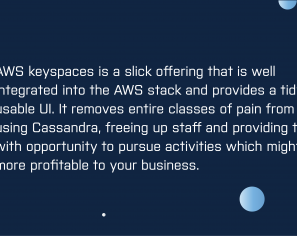September 21, 2015 | DevOps
The drive for change comes from, everywhere. Within IT departments, developers are asking for more control, and want faster response times than can be provided by traditional gatekeeper IT services. Management hears about new technologies allowing more rapid deployments, better ROI, reduction in costs, increased efficiency, and increased scalability, and they want it for their customers. On top of that, systems age, technologies lose their lustre, and technical debt builds up, while it simultaneously gets harder to recruit people from a shrinking talent pool, all of which creates a case for change from within the technology itself.

Change is coming to IT. If you work in IT, it’s almost all you ever hear about. Change, disruption, transformation, revolution. Where is the change coming from? Who’s pushing it?
On top of all the technical and financial reasons for change, there are organisational ones, as well. Many existing products and technologies are from a time when organisations ran discrete functional teams, where architecture, development, test, and support were all separated. This had a tendency to result in monolithic applications which were difficult to release, test, maintain, or improve. Over the last 10 years, the popularisation of microservices, and the ability to spin up new systems on an as-needed basis, has lead to a change in how many teams function, with a resultant increase in throughput, customer satisfaction, and morale, accompanied by a decrease in defects and customer complaints.
There is no better time to address the technical change than at the same time as the organisational change is being undertaken, and vice versa. This is due to Conway’s Law, which states that organisations will design systems which reflect their own communication patterns. This means that big, monolithic teams tend to produce big, monolithic applications. Conversely, small, self-contained teams tend to produce small, self-contained applications. Therefore, in order to have the most effective change possible, both need to be openly discussed, at least, and intentionally linked, if possible.
So the question isn’t, ‘Why do you want to change things?’ Instead, it’s, ‘Why aren’t you changing already, given the massive pressure from all directions?’
For many senior staff, lack of change isn’t through lack of desire. The risks and rewards of change are understood, though not necessarily by everybody. The difficulty is that desire to change doesn’t create ability to change. Knowing that something needs to be done is not the same as knowing how to do it.
Edward Deming said that everybody in their organisation is already doing the best they know how to do. And their organisation is where it is, behaving how it does. Which means that without something coming in from the outside – new staff, new knowledge, new skills, your organisation will stay the way it is.
If change is required, if change is desired, if change is needed, bring in the help required. Sometimes it’s only the outsider who has the freedom (freedom from expectations, freedom from politics) to see and say what’s needed. Sometimes it’s only the person with no attachment to the company who can effect change. Sometimes, outside help is required for progress, growth, and adaptation. Don’t shy away from it. Embrace help – it leads to growth. Admit to yourself when you don’t know something – it’s the first step toward knowing it.
Transformation
The Value of Transformation
Alternatively, if you’re looking for help, call us.
This blog is written exclusively by the OpenCredo team. We do not accept external contributions.


GOTOpia 2021 – Platform Engineering as a (Community) Service
Watch Nicki Watt’s talk on Platform Engineering as a (Community) Service at GOTOpia to learn what it takes to build a platform that is fit…